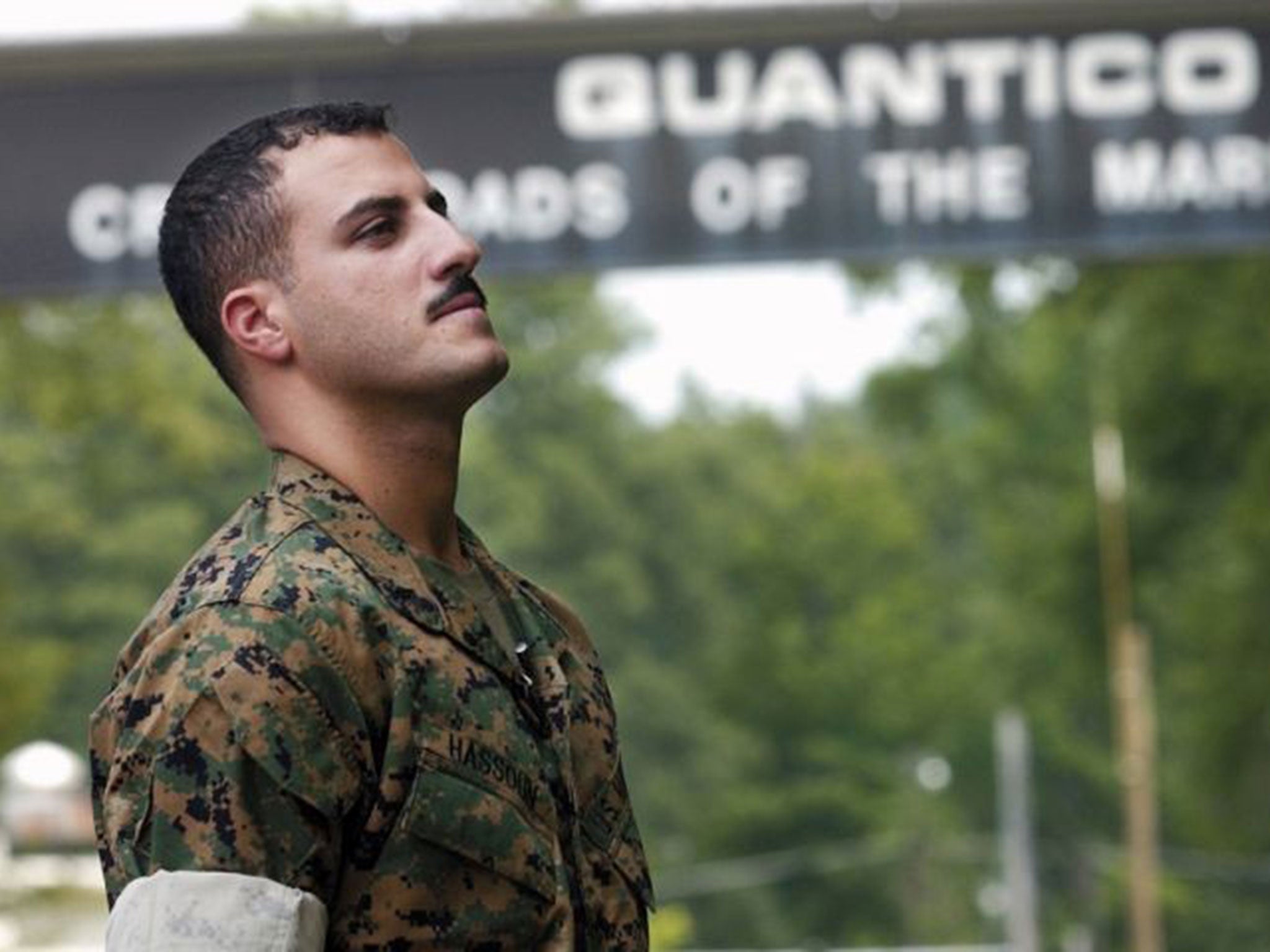US Marine 'deserter' back in custody 10 years after he first went missing
Corporal Wassef Ali Hassoun was first charged with desertion in 2004

A US Marine “deserter”, who returned to the United States after disappearing in Iraq only to go missing again, is back in military custody, officials said on Sunday.
Corporal Wassef Ali Hassoun, 34, is scheduled to return to Camp Lejeune, North Carolina, on Monday nine-and-a-half years after he failed to report for duty there on 5 January, 2005, following a visit to his family, the Marine Corps said.
He had since been listed as a deserter, the service added.
Major General Raymond Fox, commander of the 2nd Marine Expeditionary Force at Lejeune, will determine whether to court martial Hassoun.
In a written statement from its headquarters at the Pentagon, the Marine Corps said: “The Naval Criminal Investigative Service worked with Corporal Hassoun to turn himself in and return to the United States to face charges under the Uniformed Code of Military Justice.”
Media reports said he gave himself up in Bahrain.
Hassoun was first charged with desertion a decade ago, after disappearing from his base near Falluja, Iraq, in June 2004; he turned up a month later claiming to have been kidnapped by militants.
During his disappearance Hassoun was seen in a videotape, apparently being held by militants, blindfolded and with a sword poised over his head. An Islamic militant website later claimed he had been beheaded.
However, he showed up unharmed at the US Embassy in Beirut in July 2004; although he denied deserting and told reporters he had been captured and held against his will.
But after a five-month investigation, the Marines alleged that Hassoun had “taken unauthorized leave of the unit where he served as an Arabic interpreter,” the service said in a 2004 release.
Shortly before the start of military proceedings against him, Hassoun failed to report back to Camp Lejeune after visiting his family in Utah.
According to media reports, Hassoun fled the United States through Canada and went to Lebanon, where he was born.
His commanders then officially classified him as a deserter, authorizing civilian police to apprehend him.
A short time later Hassoun was placed on a Navy list of “most wanted” fugitives. A mugshot of him appeared on a Navy criminal justice website, which claimed the missing corporal used the alias “Jafar".
Marine official Captain Eric Flanagan said that Hassoun's case had no connection with that of US Army Sergeant Bowe Bergdahl, who disappeared from his post in eastern Afghanistan in June 2009 under unexplained circumstances. Members of Bergdahl's unit have said he walked away on his own and should face desertion charges.
Video: Footage of Bergdahl's release
The Bergdahl case triggered a flood of controversy in part because of questions about the deal the US struck with the Taliban to gain his release May 31, after five years in captivity, in exchange for freeing five senior Taliban commanders from the U.S. military prison at Guantanamo Bay, Cuba.
Bergdahl has not commented publicly on the circumstances of his disappearance and the Army has made no charges against him.
Additional reporting by agencies
Join our commenting forum
Join thought-provoking conversations, follow other Independent readers and see their replies
Comments
Bookmark popover
Removed from bookmarks